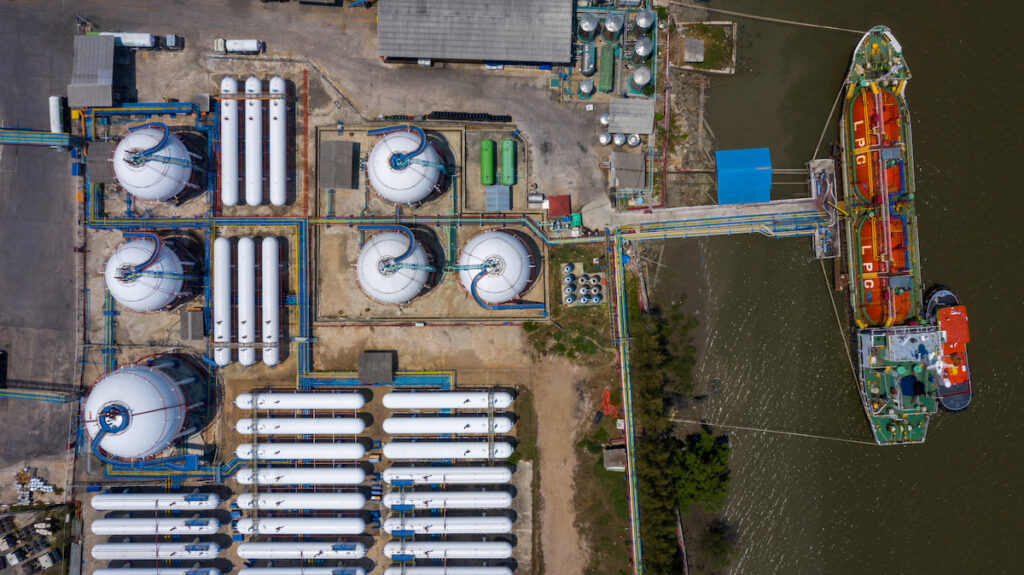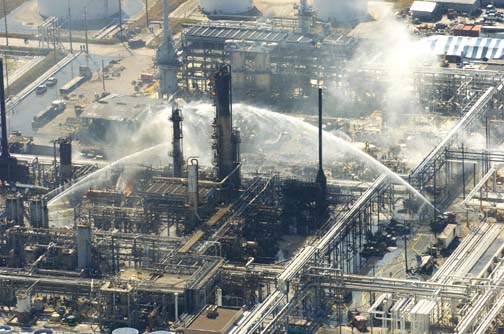Our Services
Occupied Building Risk Assessment

Occupied Building Risk Assessment (OBRA)
Reducing Risk to Occupied Buildings
The location of temporary and permanently occupied buildings at petrochemical, chemical and oil & gas facilities is important because accidents in these industries have the potential to cause significant damage.
If occupied buildings are exposed to such incidents, significant numbers of people may be present, resulting in a large number of serious or fatal injuries. Fortunately, these accidents are rare, however when they do occur, the outcome can be tragic.
R4Risk can provide guidance on the location and design of temporary and permanently occupied buildings on these sites – where hazardous materials may present a fire, explosion or toxic hazard to building occupants.
Reducing Risk to Occupied Buildings
Case Study: BP Texas City Refinery Explosion, 23 March 2005
A series of explosions occurred at the BP Texas City refinery as a result of large flammable liquid release during the restarting of a process unit. 15 workers were killed and 180 others were injured. Many of the victims were located in or around temporary on-site buildings.
R4Risk can provide guidance on the location and design of temporary and permanently occupied buildings on these sites, where hazardous materials may present a fire, explosion or toxic hazard to building occupants.
R4Risk utilises risk-based approaches documented in various industry sources and publications including US American Petroleum Institute (API), UK Chemical Industries Association and the Center for Chemical and Process Safety (CCPS).

Our Methodology
Our methodology for conducting occupied buildings risk assessments includes the following steps:

Hazard Identification
The hazardous events that can impact the occupied buildings are identified. Often this step is based on prior studies such as HAZOP, LOPA or Bowtie Analysis to screen major events with far-reaching effects.

Frequency Assessment
The frequency of the hazardous events are calculated.

Risk Assessment
The fatality/injury risk for building occupants is determined by combining the frequency and consequence/vulnerability assessment. The risk may be expressed as individual risk for building occupants and societal risk considering the occupancy of the different worker groups using the building. Suitable risk criteria can be applied to assess the tolerability of the risk (both individual and societal risk).

Identification of Risk Reduction Measures
Risk mitigation measures can be further assessed using sensitivity analysis and considering the hierarchy of controls. Most often, quantitative risk assessment (QRA) techniques are required for larger sites with multiple buildings as the cumulative risk to the building locations from all hazards must be addressed.
Occupied Buildings Risk Assessment
Frequently Asked Questions
An OBRA is conducted to assess the potential risks to personnel in permanent and portable buildings at industrial facilities from hazards including explosions, toxic releases, and fires. These assessments provide information on whether buildings offer sufficient protection for occupants and inform decisions regarding building placement, upgrades, and operational changes. The resulting models can also be used to evaluate the suitability of temporary building locations during periods of increased site activity, such as plant shutdowns and turnarounds.
These assessments provide information on whether buildings offer sufficient protection for occupants and inform decisions regarding building placement, upgrades and operational changes. The resulting models can also be used to evaluate the suitability of temporary building locations during periods of increased site activity, such as plant shutdowns and turnarounds.
These studies are critical for:
- Ensuring on-site personnel safety
- Supporting decisions on building upgrades or relocations
- Informing emergency response and shelter-in-place strategies.
Occupied buildings studies can assess permanent and temporary buildings that are intended for occupancy. A building is intended for occupancy if it has personnel assigned to it or if it is used by a recurring group function. These typically include:
- Control rooms
- Workshops
- Laboratories
- Lunchrooms
- Administration buildings.
